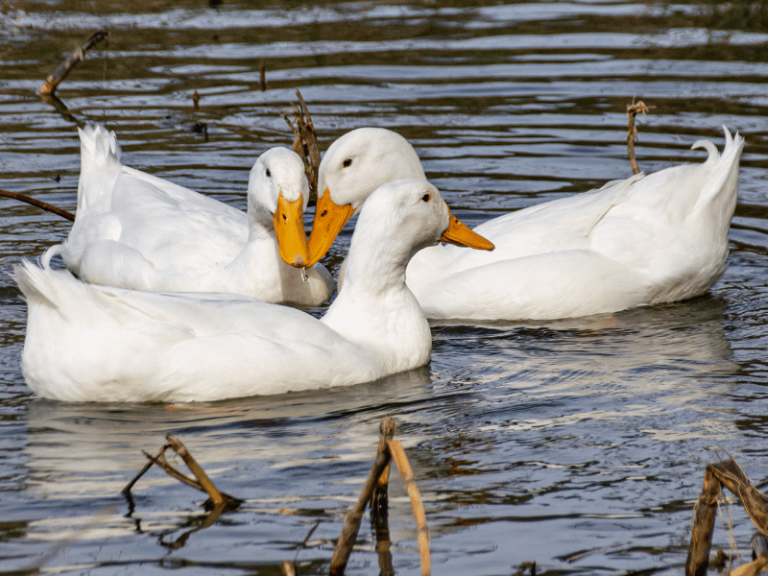The Beijing duck, originally from Beijing, is one of the world’s renowned breeds for meat production. Its entire body is clean white with webbed feet in orange. It has a large head, a full chest, broad back, long body, and relatively short legs, making it appear clumsy. It possesses a robust constitution and strong adaptability to its environment. Its temperament is gentle and kind. It grows fast, matures early, and fully grown Beijing ducks can weigh up to 30 kilograms. Ducklings just hatched can grow to over 2 kilograms within two months.
Despite these advantages, the Beijing duck still couldn’t meet people’s needs fully. To produce more fatty ducks for consumption, people developed the method of “stuffing ducks.”
Why do Beijing ducks need to be “stuffed” at a certain point? This is determined by their growth pattern. Duck stuffing typically occurs between 70 to 90 days of age, often just as their primary wing feathers begin to emerge and when they weigh around 2 kilograms. At this stage, the least amount of feed can yield the most meat, and the meat from stuffed ducks is tender and fatty. After a certain point, although possible, it becomes less economical because nutrients start being allocated to feather growth. The feed for stuffing ducks mainly consists of grain powder, sometimes supplemented with fish liver oil, vitamins, and other nutrients. This mixture is moistened with water to form a porridge or rolled into pellets slightly thicker than a finger. It is then manually stuffed into the duck’s esophagus twice daily, while also restricting its movement appropriately by placing it in a specially designed duck house and providing clean water regularly. This process quickly fattens the ducks over a few days.
Beijing ducks also lay eggs, but they are primarily raised for meat. During stuffing, feathers, especially primary and secondary wing feathers and all tail feathers, are often plucked. Feather plucking promotes better blood circulation throughout the duck’s body, accelerates molting, shortens the molting period, temporarily stops egg production, and allows for more efficient nutrient absorption to accumulate fat, achieving the goal of fattening. Ducks generally do not lay eggs during their molting period. If a duck is in egg production while being stuffed, the nutritional effect of the stuffing food will be dispersed, which affects the fattening results negatively. Feather plucking disrupts the duck’s natural cycle in the short term and serves as a beneficial auxiliary method for stuffing ducks.

